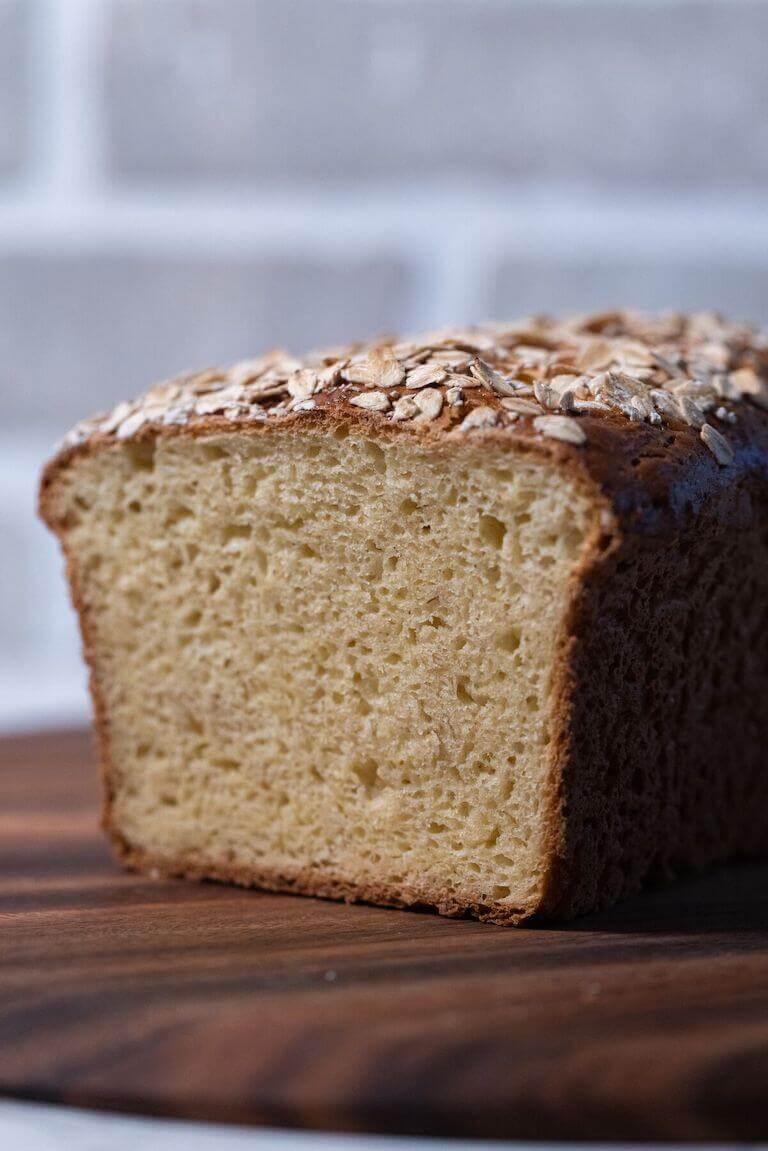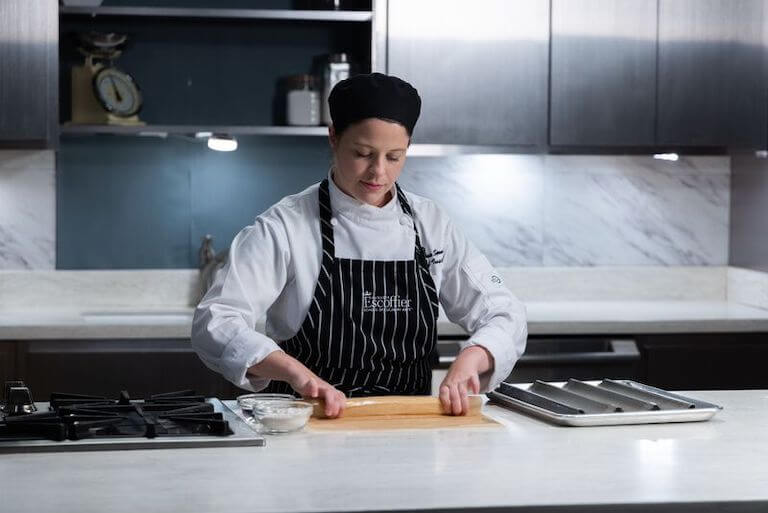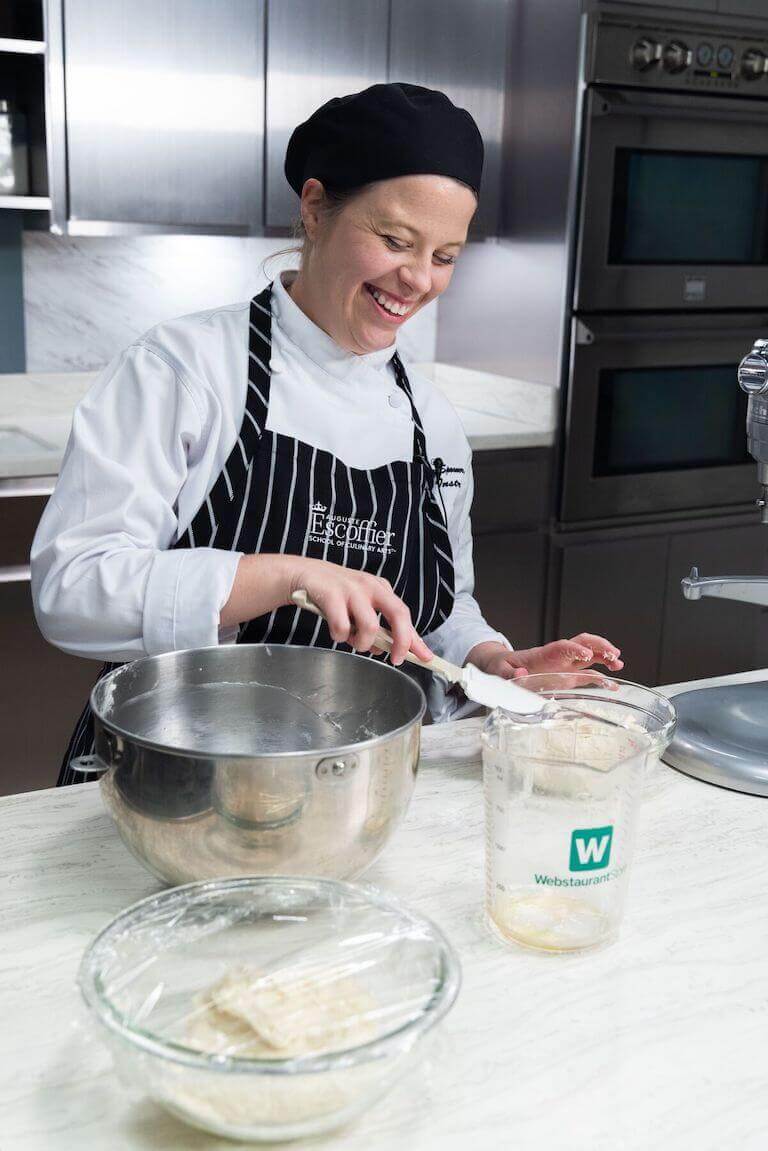If you quickly peruse your local grocery store’s bread section, it’s likely sprinkled with various gluten-free options. Why? Well, the demand continues to rise. According to Digital Journal, the gluten-free bread market is expected to reach $1.024 million in revenue by 2027, with a compound annual growth rate of 9.44%.
So what is gluten-free bread and why is it so popular? Plus, how do you attempt to make bread without this essential protein that gives bread its satiating, spongy texture? If you’re curious about diving into these details, keep on reading!
What Is Gluten-Free Bread?
Let’s first take a look at conventional bread ingredients, which usually consist of flour, water, salt, and yeast. During the kneading process of bread baking, the gluten protein is usually activated, which keeps the bread intact, since it’s a large protein molecule. You can almost think of gluten as “texturizing baking glue” that’s found in grains of rye, barley, and wheat. So if you omit this critical binding component, how does gluten-free bread even exist?

Freshly baked gluten-free honey oat bread.
According to The Spruce Eats, early gluten-free bread iterations in the 90s heavily relied on rice, corn, potato starches, and xanthan gum to help the texture and elasticity. When it comes to gluten-free baking, starches can emulate the structural backbone of gluten and gums can support the viscosity. A bit later, more bakers started to experiment with corn, rice, and tapioca substitutions.
Then, as the gluten-free concept started to gain more momentum in the 2000s, bakers became a bit more innovative, playing in the kitchen with fiber-rich brown rice flours, amaranth, millet, and teff—known as more nutrient-dense ingredients—as well as with more refined sugars. All of these recipe alterations also prolonged the shelf life of bread.
Fast forward to today. Bakers now have access to a host of gluten-free ingredients that serve as exceptional binding agents, such as chickpea, almond, rice, buckwheat, and quinoa which usually don’t compromise flavor, texture, or shelf-life. Plus, many options today consist of gluten-free whole grains which can give you a healthy boost in fiber, vitamins, and protein.
So Why Does Gluten-Free Bread Exist in the First Place?
As we mentioned, gluten is quite stretchy in nature and forms a sticky protein mass. The protein found in gluten can be challenging to digest for some, and for those experiencing Celiac Disease, the autoimmune response can cause health problems, including intestinal damage.
Others might have a gluten intolerance, which could trigger a migraine, intense fatigue, or other ailments. Because of these types of health conditions, consumer packaged goods companies and bakers alike continue to refine and market their gluten-free bread options.
Gluten-Free Bread Is Here to Stay
The gluten-free bread market has surged tremendously and especially skyrocketed during the COVID-19 pandemic when the demand for “healthier” food options in hopes to maintain a strong immune system emerged.
With a growth rate of over 9%, many bakeries around the world continue to provide quality gluten-free bread to serve their health-conscious customers. But it’s no secret that constantly formulating these gluten-free offerings can be more complicated than baking traditional bread, which is why bread-baking classes can help!
Students enrolled in Escoffier’s Baking & Pastry program can take a deeper dive into the entire bread-baking process, from start to finish! This includes the science of baking at different temperatures to handling and shaping dough correctly.

Shaping gluten-free French bread takes some practice.
On top of this, aspiring bakers or business owners who dream of scaling their own operations can explore how to produce bread on a commercial scale.
How Gluten-Free Bread Is Typically Made
There are a plethora of gluten-free bread recipes circulating around on the internet with slightly different ingredient lists. However, if you’re a beginner gluten-free bread baker, it’s best to experiment with a “no-fuss,” tried and true gluten-free bread recipe that tastes great and can be used for a wide range of meals during the week—like buttery PB&J’s or crunchy BLT’s for lunch.
In general, these are the five steps to making easy gluten-free bread.

There are several steps to make a great gluten-free bread.
1. Proof Your Yeast
To begin the gluten-free bread-baking process, you’ll usually proof your yeast and follow the directions on the package accordingly. We usually suggest using gluten-free dry active yeast or instant yeast for the most effective results. Autolyzed yeast extract, however, should be avoided because it is not gluten-free, as it is derived from barley.
2. Combine Flours and Dry Ingredients
In general, you’ll want to choose a recipe that contains high-protein flour like millet, which can support the actual structure of your gluten-free bread—providing extra volume. Since you want to preserve the integrity of the protein during the mixing phase, make sure to gently combine all the dry ingredients.
Another quick tip—make sure you leave all of your ingredients at room temperature. Refrigerated ingredients might interact with the yeast and interrupt the rise of your loaf later on.
3. Add in Proofed Yeast and Wet Ingredients
Most gluten-free recipes will call for the addition of eggs and oils to enhance moisture. Eggs are also natural leaveners that support the volume, texture, color, and shelf-life of gluten-free bread. Including oil can also result in a richer, more tasty loaf and provide a bit more moisture too.
4. Let it Rise
Once all ingredients are properly combined, transport your dough to a loaf pan, and allow it to rise for up to an hour (depending on the recipe). During this phase, it’s critical to not overfill your pan with dough, as it could collapse during the baking process.
5. Bake Away
Depending on the recipe instructions, make sure to bake your gluten-free loaf completely. It’s best to use a digital thermometer, so you can easily monitor the internal temperature of your bread, which should be around 206°F.
Start Making Delicious, Gluten-Free Bread
Baking gluten-free bread is part science, part creativity. If you understand the different types of gluten-free flours, starches, and gums available on the market, and grasp the various steps of the bread-baking process—the possibilities are practically endless.
If you’re curious about how to improve your bread-baking skills, consider Escoffier’s Baking & Pastry programs, where you can explore the foundations and basics of bread baking.
Enjoyed this article? Check out these ones next:
- What Can You Learn in a Bread Baking Class?
- 6 Skills Every Baker Should Have
- Sanitation Best Practices in Bakeries
*Information may not reflect every student’s experience. Results and outcomes may be based on several factors, such as geographical region or previous experience.



